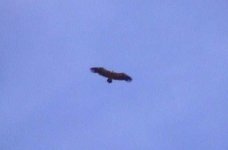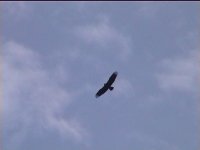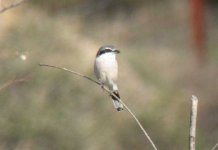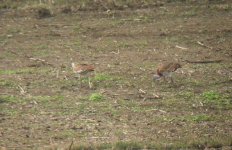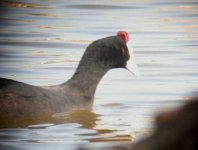We had our week in Seville last week, our first visit to this part of Spain.
We had a very relaxing time based in a beautiful city, combining sight-seeing with plenty of birding in glorious weather.
On Monday we joined John Butler and four others and took advantage of his intimate knowledge of the region to the south of the city, toward the Coto Donana. He knew just where to find masses of birds from the maze of dirt roads that criss-cross the area. Highlights of the day were six Black-shouldered Kites, a Spanish Imperial Eagle being mobbed by a Booted Eagle, 90+ Glossy Ibis, six Black Storks, vast numbers of White Storks, Little Egrets, Cattle Egrets and Night Herons, and Calandra and Lesser Short-toed Larks.
Tuesday we headed north into the hills, the Sierra de Aracena to be precise, as recommended by John Cantelo. We had super views of four Black Vultures to the west of Almonaster la Real. We met a local conservation officer who told us there are about 70 pairs between here and the Portuguese border.
The next day was a "necessary" tick-fest visit to Cañada de los Pajaros, a kind of mini Martin Mere, where they run a captive breeding programme for Red-knobbed Coots. Like all these places the presence of tame jobs attracts lots of wild ones too and we were assured that those birds without collars were well and truly wild. Three Marbled Ducks also proved their credentials by swimming away from us so they've gone down in the book. We were glad to get away however: as if a cage containing single Magpie, Raven, Carrion Crow and some exotic corvid (what on earth is that all about?) wasn't enough to deter us, the presence of a horde of school-kids chucking sticks and stones at the ducks in full view of their disinterested minders sent us fleeing to the car-park.
That afternoon we ventured on to the vast, gently undulating plains north of Sanlucar la Mayor, in a half-hearted attempt to find some bustards, our chances of which I rated as pretty slim. I was right, but the flock of Rock Sparrows was good.
Anxious to seek further solace from the uninteresting flatlands and the innumerable building sites, on Thursday we drove north-west to the Parque Natural Sierre Norte. It's a beautiful area, wooded rolling hills and little traffic. After watching some Thekla Larks I just noticed a large raptor alighting on a distant tree-top. As I got the scope on it another dropped in to join it. The white shoulder patches were clearly visible. Realising that the road passed quite close to their tree, we drove further along and enjoyed prolonged views of this adult pair of Sp Imp Eagles. Nice one Jose Javier!
The weather on our last day went downhill somewhat, but after a final wet walk in the city we revisited the plains between Olivares and Gerena, happy to sit in the car and watch the rain fall. Then the sun came out, I set up the 'scope and was immediately watching three Great Bustards! Jose, you're a genius and I owe you a six-pack of San Miguel! Thanks also to those who provided information.
95 species - including five lifers - without trying too hard!
 ?
?




